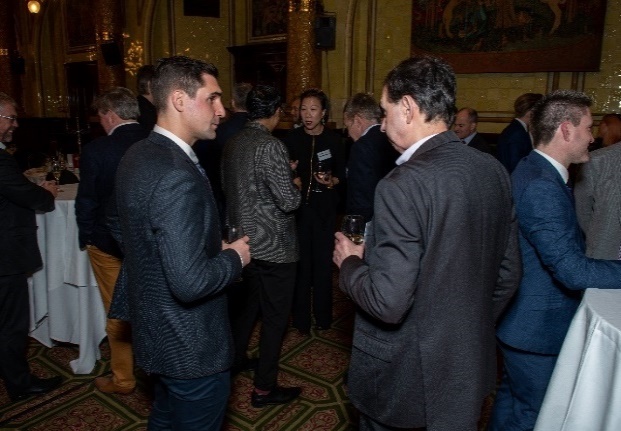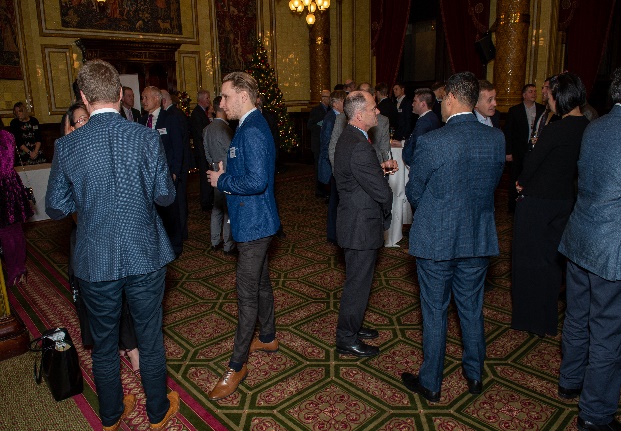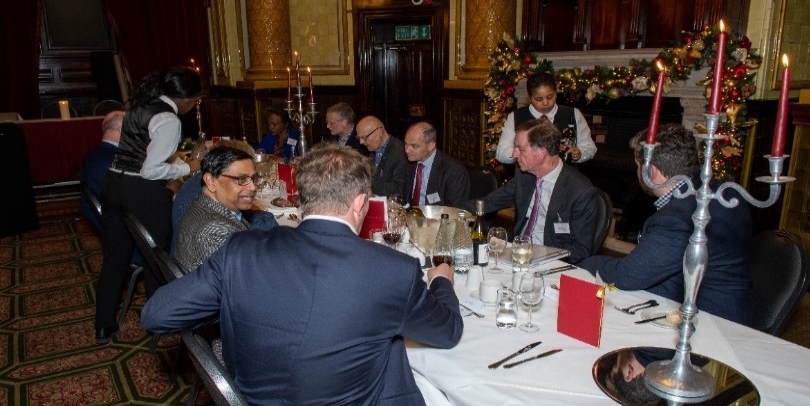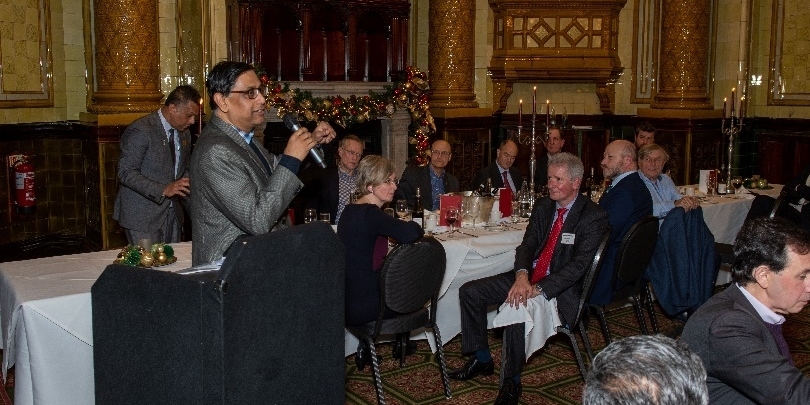Dec 1, 2022
THE ROYAL HORSEGUARDS HOTEL, Whitehall, London
The Venue
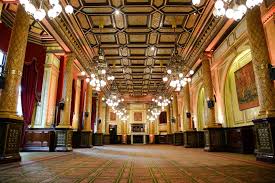 The Royal Horseguards Hotel was built between 1886 and 1892 as part of a bigger development called Whitehall Court, which housed superior flats whose residents included William Gladstone, Lord Kitchener, George Bernard Shaw, H.G Wells and the younger brother of Tsar Nicholas II. Parts of the hotel were later used by the forerunners of MI5 and MI6, being handily located to the old War Office.
The Royal Horseguards Hotel was built between 1886 and 1892 as part of a bigger development called Whitehall Court, which housed superior flats whose residents included William Gladstone, Lord Kitchener, George Bernard Shaw, H.G Wells and the younger brother of Tsar Nicholas II. Parts of the hotel were later used by the forerunners of MI5 and MI6, being handily located to the old War Office.
The National Liberal Club is located within the complex. Winston Churchill was a member in his younger days. The stupendous Whitehall Suite, pictured, where we held our dinner, used to be the Billiards Room. The scale almost beggars’ belief. Clearly conceived and built at the pinnacle of Empire, when wealth and confidence flowed unceasingly, as they assumed.
Awarded to Dr Graham Cooley, CEO of ITM Power Plc
Graham joined ITM Power as CEO in 2009, which had listed on the London Stock Market as early as 2004. He began his career in the power sector, in 1989, joining the CEGB and becoming Business Development Manager at National Power plc. Prior to ITM Power, he was variously CEO of Sensortec Ltd, founding CEO of Metalysis Ltd, a spin out from Cambridge University, and founding CEO of Antenova Ltd. Graham sits as a member of the UK Government’s Hydrogen Advisory Council, and is a board member of RenewableUK. He has a PhD in physics.
The criteria for the Award:
- Founded or runs a UK based manufacturing-oriented high technology company
- A fusion of technical and business acumen
- Leadership and entrepreneurial spirit
- Resilience and tenacity in pursuing goals
- Already achieved significant success or progress
- A keen sense of moral and ethical purpose
Award Ceremony
The Ceremony took place in an adjoining room where Dr Stephen Bennington, Chair of the Bessemer Society, explained the criteria for nomination, and how the Awardee embodies the Bessemer Spirit!
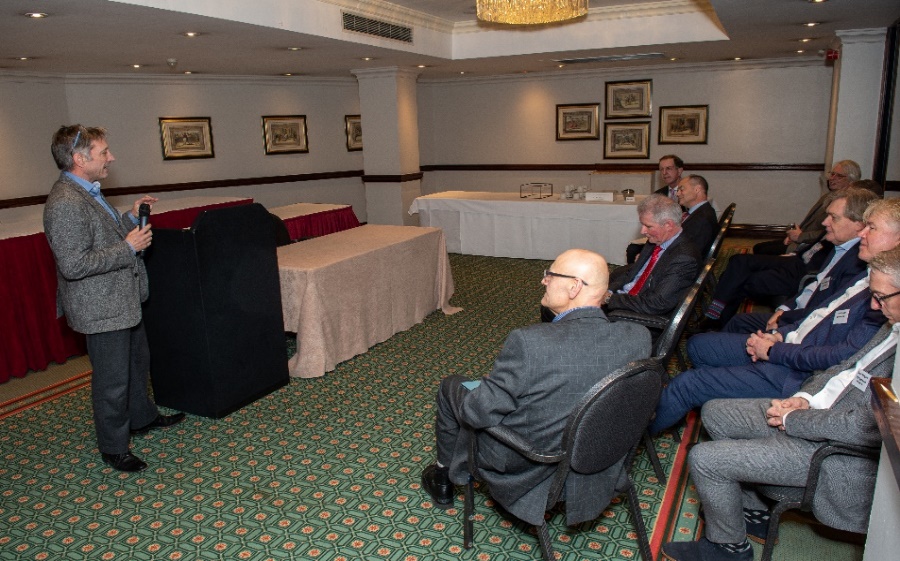
Pictured: Stephen Bennington introducing the Award; Graham Cooley nearest in the picture listening attentively; beyond him Brendan Bilton of Element-2 Ltd is waiting his turn to make a personal introduction about workng with Graham; and Warren East next to him is ready to make the Award.
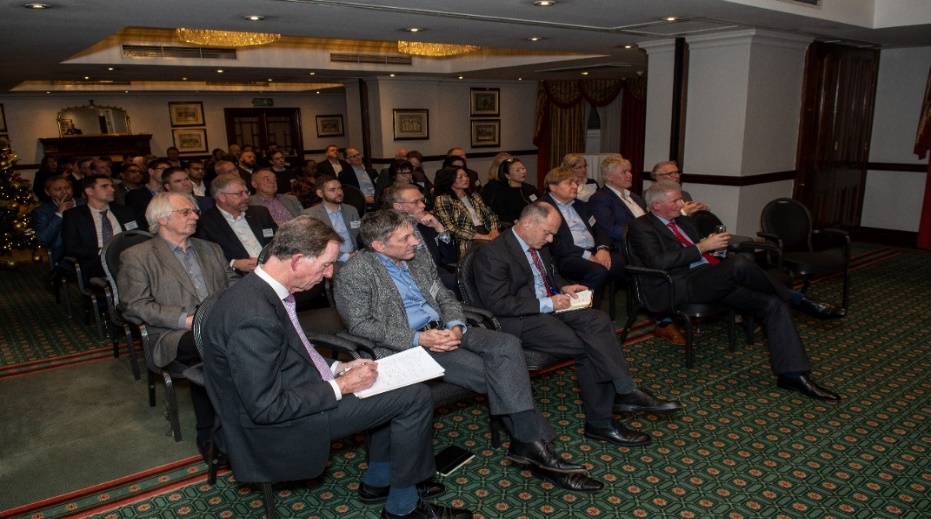
Guests pay rapt attention as Graham Cooley is giving the After-Award Talk.
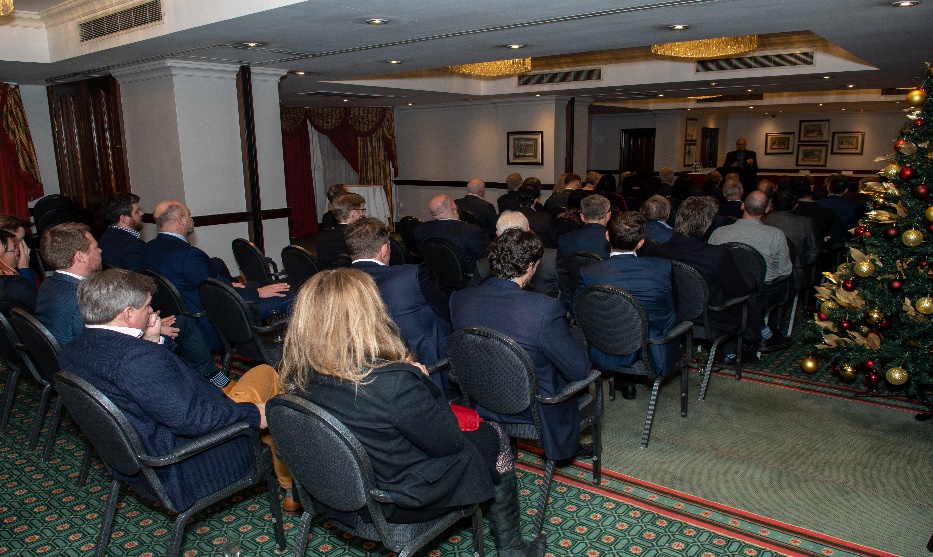
View from the back of the auditorium as Graham gives his talk.
AWARD & WARREN EAST’S CONGRATULATION
Warren received our Bessemer Award last year. However, it was not because of this that we invited him to give the Award this year, but because there were several touch points in Graham’s and his careers. A new touch point is that both of them are stepping down this year from their respective roles as CEOs. Graham’s announcement came after we had nominated him for the Award. Rolls-Royce however had already announced that Warren would step down this year. His last working day is December 23rd while Graham formally signed off as a Board Director and CEO of ITM on the morning only of our dinner. Both of them then will be starting fresh chapters in their lives which is quite poignant, as well as exciting to consider what sort of plans they may have which could touch the Bessemer Society going forward.
An interesting touch point is that Warren had recently attended the first test of a hydrogen-fuelled Rolls-Royce engine which was using green hydrogen produced by ITM’s electrolysers. It might have been one of his last such assignments. During his Arm days, his office had been located near to another successful Cambridge company, Antenova, which Graham had co-founded and led. Moreover, the person who hired Warren into Arm, Jamie Urquhart, was also a board director of Antenova, so there was an early link.
Warren pointed next to the entrepreneurial element of the Bessemer Award, recalling how Antenova had pivoted its business successfully so that its technology would align to a new market opportunity. He mentioned too the pioneering element in Graham’s career – how for example during his Arm days there had been a major energy storage development programme in Cambridge with which Graham was closely involved, underlining Graham’s rightful position as an entrepreneurial pioneer of the market for energy storage.
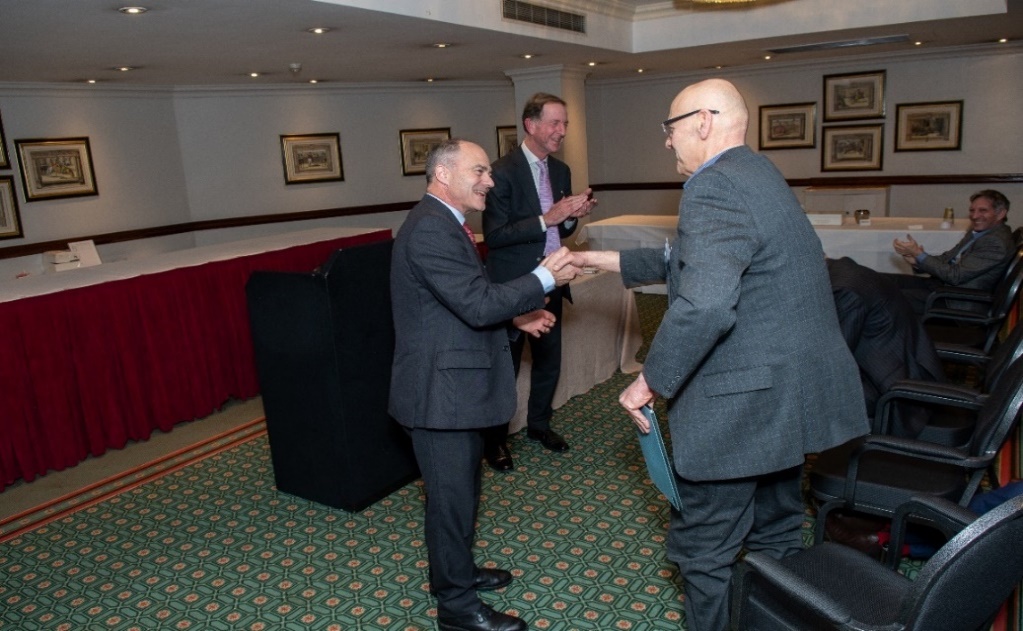
GRAHAM COOLEY’S RESPONSE
Stepping down as a Board Director and CEO of ITM Power only that morning must have made the timing of Graham’s Award more special I hope, and must also have had him wondering how those 13 ½ years he had been CEO of ITM Power had flown by! Fortunately, he seems poised to continue to champion hydrogen, manufacturing, and Net Zero beyond ITM Power.
He called his time in charge at ITM an “amazing journey”. They had built the largest electrolyser equipment manufacturing plant in the world on a site called Bessemer Park in Sheffield [what a tremendous association]. They had raised £120M in October last year, which briefly rocketed their valuation to nearly £4bn. In total, ITM Power has raised £500M of equity capital during Graham’s tenure. By itself this is a success story, given the City’s nervousness towards manufacturing. It also makes Graham a natural champion of manufacturing in the UK, and where better to be located for that purpose than Sheffield?
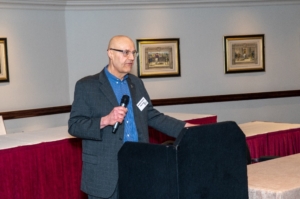 What followed was a masterful explanation of why in Graham’s view Green Hydrogen is the least carbon emitting fuel and deserves to be front and forward in a Net Zero agenda: it can be stored as a molecule (which is much easier than storing an electron); and using an electrolyser it can split water and produce hydrogen energy without any carbon in the supply chain. “This is an absolute reversal of the energy transition from the past”. Graham called the current energy transition the 4th Industrial Revolution, having started with coal going on more recently to petroleum and now to Net Zero carbon. What is unique however, is that there is a deadline imposed on achieving this new energy vector. Or as Graham put it, “if we miss this deadline, it will be the last revolution”. To achieve, it is going to require trillions of dollars of investment in equipment, which means for manufacturing companies this is a huge opportunity (the same point echoed later by Warren).
What followed was a masterful explanation of why in Graham’s view Green Hydrogen is the least carbon emitting fuel and deserves to be front and forward in a Net Zero agenda: it can be stored as a molecule (which is much easier than storing an electron); and using an electrolyser it can split water and produce hydrogen energy without any carbon in the supply chain. “This is an absolute reversal of the energy transition from the past”. Graham called the current energy transition the 4th Industrial Revolution, having started with coal going on more recently to petroleum and now to Net Zero carbon. What is unique however, is that there is a deadline imposed on achieving this new energy vector. Or as Graham put it, “if we miss this deadline, it will be the last revolution”. To achieve, it is going to require trillions of dollars of investment in equipment, which means for manufacturing companies this is a huge opportunity (the same point echoed later by Warren).
It was already clear to him 30 years ago that it would require a major crisis to accelerate an energy transition. The “weaponization” of gas by Putin’s Russia is an example having sharply pushed up natural gas prices, which are the feedstocks for industrial hydrogen and ammonia. As a result, input costs for conventional hydrogen and fertilisers have increased to the point that that many farmers in poorer countries cannot afford to use them leading in turn to a food crisis. Once however it is possible to produce hydrogen and fertilisers without carbon, this risk dynamic will disappear.
All of this he calls a “no-brainer”, but even so the German Government is willing to spend massively to build a new LNG terminal to import natural gas even though the LNG will have seven times the carbon footprint [this underlines the problem of making a transition when it threatens carbon-intensive industries – a focus of Tata Steel’s talk later and referred to too by Warren in his talk].
The UK’s advantages for making the energy transition are the good conditions for wind power; the progress in fusion energy; and the development of small modular nuclear reactors, led by Rolls-Royce. What is needed is an alignment of capital markets to understand how things fit together within a broader Net Zero perspective, which requires changing value judgements based on traditional GDP metrics to ones which factor in things like the quality of life. He quoted here last year’s Reith Lectures by Mark Carney which were titled “Moral to Market Sentiments”.
Capital is vital he concluded. ITM’s stock market listing has given it the ability to grow. The problem however is that too many companies in the UK lack ambition to grow: “They are too modest”. He contrasted this with Americans who exude confidence. It is a topic we have come back to several times at the Bessemer Society and look forward to engaging with Graham about it in the future.
NETWORKING UNDERWAY AFTER THE AWARD
THE AGM REVIEW
The AGM part of the evening provides a short overview of the year’s events and takes place before dinner is served. Some of the key points covered were as follows:
- Membership: 145
- Dinner events: 13 took place
- Dinners: covered a wide range of topics with keynote speakers
- Venues and locations: eclectic – from pubs to grand institutional buildings
- Outreach initiatives – see example below..
SEMICONDUCTOR MANUFACTURING GROUP INITIATIVE
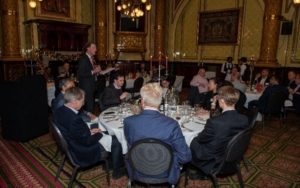 The most important outreach has been the formation of a Semiconductor Manufacturing Group which has come about following a report the Society published proposing a National Compound Semiconductor Strategy.
The most important outreach has been the formation of a Semiconductor Manufacturing Group which has come about following a report the Society published proposing a National Compound Semiconductor Strategy.
One of the report’s recommendations was to establish a public-private semiconductor fund that will have a focus on manufacturing infrastructure and supply chains and a unique industry-led form of operation making it a unique hybrid private equity and institutional dividend income type of fund.
If successful it might provide a template for future HardTech Patient Capital Funds in which case it will have been of tremendous benefit to our community.
VIEW OF DINERS
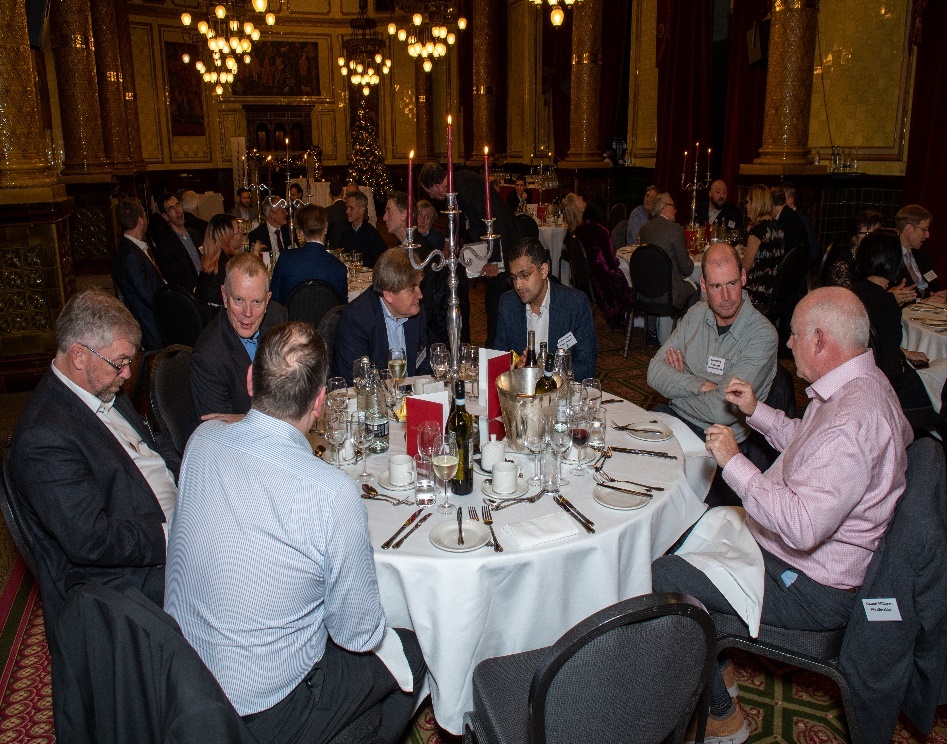
A view of the dinner attended by 55 guests: Guests in foreground: Clockwise, starting back to camera: Peter James, CEO of Lyra Electronics; Jarl Severn, MD of Owen Mumford; James Lewis, CEO of RED Semiconductor; James Ashforth-Pook, CEO of UltraRAM; Aniruddha Sharma, CEO of Clean Carbon; Scott White, CEO of PragmatIC Semiconductor; Chuck Milligan, CEO of FlexEnable
TOP TABLE
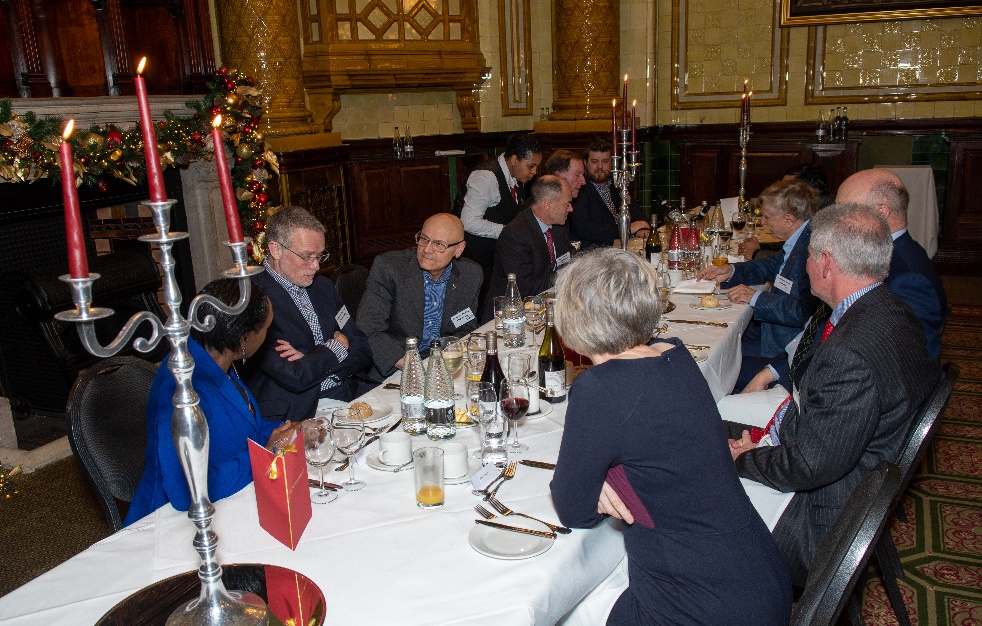
Twelve on Top Table To Graham’s left Warren East; opposite Warren, leaning forward, Sir Robin Saxby. To Graham’s right, Andrew Churchill of JJ Churchill. Right of him, Janet Collyer, Board of ATI and Chair of Machine Discovery Ltd; opposite Janet, Penny Owen, Commercial Director of NPL (which is a Bessemer national sponsor); to Janet’s right, Brendan Bilton, co-founder of Element-2 (a Bessemer Council member, long-standing colleague of Graham Cooley, and the industry sponsor of the dinner).
TATA STEEL BESSEMER TALK
Dr Chris Elliot of Tata Steel UK had given talks for three successive years at our Award Dinners in which he described how Bessemer’s inventive and entrepreneurial spirit can be linked to present times. It was starting to become a tradition to hear what new light he could shed each year.
IN MEMORIAM OF DR CHRIS ELLIOT
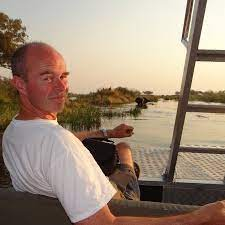 It was therefore with the deepest sadness I had to explain that Chris had died in August soon after entering hospital with a rare form of Leukaemia. He had already prepared the text for the talk and shared it with me. At this point he had quite likely just entered the hospital. It is so touching therefore he should have wanted to fulfil his promise to provide us with another scintillating talk. It was not to be, as he died on August 23rd, the last email I received from him was on August 19th which gave no indication of what lay around the corner.
It was therefore with the deepest sadness I had to explain that Chris had died in August soon after entering hospital with a rare form of Leukaemia. He had already prepared the text for the talk and shared it with me. At this point he had quite likely just entered the hospital. It is so touching therefore he should have wanted to fulfil his promise to provide us with another scintillating talk. It was not to be, as he died on August 23rd, the last email I received from him was on August 19th which gave no indication of what lay around the corner.
It hit me very hard that we had lost someone who had been so committed to the spirit of the Bessemer Society, supporting and encouraging HardTech entrepreneurs; always so enthusiastic about every dinner he attended. Now no more.
His first talk in 2019 had set a very high standard and he raised the bar higher in each of the following two years. I was seriously wondering therefore how he could keep it up. It would be impossible for me, at least, to imitate his delivery and the enjoyment he could not disguise as he delved into and delivered fascinating insights to Sir Henry’s life and how it might be applicable to us still. I could not however waste the wonderful talk he had prepared so I provided a summary of the main points.
It was titled, “Wonder Materials – Past and Present”. He began by explaining how amorphous metals had been the wonder materials of his day when he was doing his PhD in the 1980s. Then he fast-forwarded to today’s new wonder material, Graphene, referring to it as a 3D stack of graphite.
Graphite was not quite a ‘wonder material’ in the 19thC, but it was extremely valuable, prices reaching the equivalent of £500,000 per tonne in today’s money. Hence the temptation to steal it was irresistible, so much so that it required armed guards to transport shipments. Chris then gave us examples of the colourful rogues who schemed over how to lay their hands on it. For example, the handsomely-named ‘Dandy Wad Stealer’.
Henry Bessemer enters the scene aged 25. He had already had success in improving dies and castings and was looking for new opportunities. It led him to thinking about the production of pencils, where he discovered that the critical step in the manufacturing process was the pencil lead. The manufacture of this had to be performed by skilled craftsmen who aimed, if lucky, to saw plumbago lumps into 1.5mm slices. This though was extremely difficult to do and the yield at best was 60% with the rest wasted. The young Henry’s solution was to work out how the sawing operation could be modified so that the sawing dust didn’t clog the blade which he then automated by adding a friction clutch to save plumbago lumps from shattering.
The problem came when he wanted to market his invention. The first pencil company he approached was nervous to enter into communications in case it gave Bessemer access to any of their trade secrets. Thinking outside the box therefore, he thought of a way to create even more value, by using a 400-tonne press at high temperature to compact the worthless fines from the sawing into a cylindrical form suitable for manufacturing pencils. This was now a really valuable invention. However, the lack of business experience failed him again, as he accepted an offer to sell the rights from a friend for £200 (about £30,000 in today’s money) who then sold the rights for a much higher sum to the Plumbago Company of Cumberland, who then made all the money [familiar to our Bessemer community who hear about brilliant start ups sold too early to large foreign corporations who then derive the value-added benefits many times over].
When reviewing his life’s work for his autobiography, Bessemer wrote ruefully, “I fear this little episode does not speak very favourably for my business capacity in those early days, for I really ought to have made much more than I did by this really important invention.” But learn he certainly did as his autobiography then makes abundantly clear.
SUMITESH DAS, TATA STEEL UK
Sumitesh Das, head of R&D at Tata Steel UK, continued then to talk about Chris’s inspirational role as the New Product and Marketing Lead at Tata Steel, describing him as his very valued mentor and friend.
It should be noted too that Chris had a less public role helping Tata to find solutions to achieve net zero steel making. Sumitesh continued by informing us of the challenges that the Port Talbot steelworks faces of transitioning to net zero carbon manufacture while facing higher energy costs without special support from Government.
[Bearing in mind the earliest licenses for the Bessemer steelmaking process were taken by iron foundries in South Wales, it is painful to see Port Talbot, the last major steelworks in the UK, struggling. Moreover, Port Talbot is a very strategic asset for the UK. We have in mind therefore to organise a Bessemer dinner next year which focuses on the steel supply chain in the context of net zero.]
- Sumitesh relaxing after his talk
ANDREW CHURCHILL’S DINNER TALK
Andrew is the third-generation owner of JJ Churchill, which was established in 1937 by his grandfather to manufacture precision components for the aircraft industry. One of its principal customers is Rolls-Royce. It seemed fitting therefore to ask Andrew to speak to us, not only because of the Rolls-Royce connection, however, but because he is a very active promoter of UK manufacturing, an interest he shares with Graham. He exercises this through his membership of the Prime Minister’s Industrial, Manufacturing and Infrastructure Business Council, as well as sitting on several other boards. He was also for ten years on the boards of Make UK and Midlands Group Training Services (a centre of excellence for education, training and development of engineering apprentices).
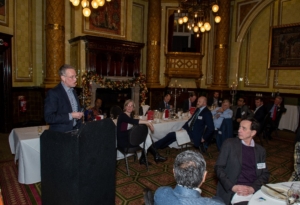 Given the company’s dependence on aerospace Covid was touch-and-go for its survival. It is testimony that Andrew could join us as a speaker because the company pulled through so well, and more than that, it is stronger than ever.
Given the company’s dependence on aerospace Covid was touch-and-go for its survival. It is testimony that Andrew could join us as a speaker because the company pulled through so well, and more than that, it is stronger than ever.
However, when Covid hit, they had to cut headcount by 50% (but did not touch new apprentices). It was the maximum they could let go if they were going to pick up again after the crisis. The remaining work force took a 10% cut in salaries, agreed flexible shift patterns and made other adjustments. All this was agreed and put in place by June 1st.
“Never waste a crisis”, Andrew quoted his namesake, Winston Churchill. There were three main things they did not to waste the crisis: 1) To show determination in the face of a collapse in demand (down 85% from aviation); 2) Reinforce resilience by managing cash flow (not the same as cash); 3) Make use of strategic intel about the market and customers – the defence sector for example held up virtually untouched.
Nonetheless, the company had to buy time by taking in private equity investment. As a result, it has been able to protect its brand and “fight another day”. It only achieved this because it had open and honest communications with its work force. What helped was the importance it attached to apprenticeships. Most of its 140-workforce have come through this route which creates a stronger family-like bond. Good news therefore this year is that it has re-employed most of the 50% it had to let go, and not had to re-hire any of those who were not full contributors.
What has made this recovery possible is that it won the largest order in the company’s history for the supply of nozzle guide vanes for the Pearl 700 engine (the single powerplant offered for the Gulfstream 700) and the Pearl 10X (the first time French-owned Dassault have ever bought Rolls-Royce engines for one of their business jets). This will be the most efficient engine available in the business aviation sector, which includes the capability to operate on 100 per cent Sustainable Aviation Fuels. The order has a value to JJ Churchill over 10 years of £150m. As Warren signalled later this is going in the right direction to reach net zero targets, which Andrew adds is critical for the next-generation joining the workforce now.
WARREN EAST’S KEYNOTE TALK
Warren pictured during the networking before dinner listening to Sir Robin Saxby, the founding CEO of Arm, possibly to hear about Robin’s recent attendance as headline speaker at a major IT conference in Bangalore, India. To Robin’s right is Peter Cowley, leading Angel investor and Cambridge technology guru.
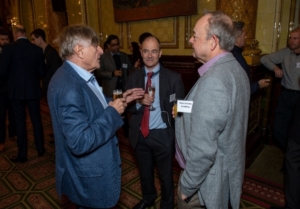 Warren was in philosophical mood, which seemed highly appropriate given he had only three weeks left in charge of the world’s most famous engine brand. His beginning comment was that the idea of an ‘engineer’ needs re-casting as it still evokes someone doing a mechanical job, or a civil engineer, but during Covid there was another kind of engineer who took centre stage – bioscience engineers – those who learnt to “tame” the RNA virus and make it effective as a vaccine. “This is what engineers do”, said Warren, “they tame the science” – adding they also sometimes learn from how nature works – something that interests Warren very much too.
Warren was in philosophical mood, which seemed highly appropriate given he had only three weeks left in charge of the world’s most famous engine brand. His beginning comment was that the idea of an ‘engineer’ needs re-casting as it still evokes someone doing a mechanical job, or a civil engineer, but during Covid there was another kind of engineer who took centre stage – bioscience engineers – those who learnt to “tame” the RNA virus and make it effective as a vaccine. “This is what engineers do”, said Warren, “they tame the science” – adding they also sometimes learn from how nature works – something that interests Warren very much too.
Warren then talked about how Covid-19 had posed a massive challenge across society, not least for companies like JJ Churchill and Rolls-Royce which supply the aerospace sector. Added to this challenge was the pressure to shift to a net zero carbon future, as Graham had spoken about. For millennia human society operated within a stable energy environment, but then it suddenly changed in an extremely short period of time, putting a great strain on the earth’s equilibrium. To restore the equilibrium requires an even faster reversal therefore in the amount of carbon going into the atmosphere in order to achieve net zero in the short space of time that has been set.
There are three ways to look at the problem, he suggested: 1) Face the Consequences: 2) Adapt to the circumstances; 3) Address the issue. To face the consequences means going beyond discussion and analysis, such as modelling different outcomes, to take action, otherwise society will have to face the consequences of not doing enough. Adapting to the situation has to take into account the nature of industrial society. It is too late to expect societies to de-industrialise, e.g. not to use concrete or steel; or to travel by air, or car; or to stop international trade. “No-one in history has decided to go backwards on progress”. Thus, the issue has to be addressed by shifting as quickly as possible from fossil fuels, while taking into account both the consequences of not doing so, and how to adapt industrial society at the same time.
There are many approaches and technologies proposed but also vested interests start to emerge. Better therefore to look at all of the different technologies and the particular parts they can play. Ultimately it is the interplay between consumers (users of energy) and suppliers of energy who will find the way forward, lubricated by government legislation to reach positive outcomes faster. Some things are clear, such as the grid will require a lot more energy storage; also, that there are many ways to mitigate the effect of carbon emissions, such as using insulation in housing, or making engines more energy efficient. There are also multiple ways to decarbonise the grid: green hydrogen is one of them (ITM Power); or nuclear (a strong area for R-R). All of this is a great commercial opportunity for manufacturing industry as Graham has said. It must be grasped with both hands.
Returning to his opening remarks about Covid-19, Warren noted how at the start of the crisis there was a risk of hospitals not having enough capacity to cope. This elicited a dramatic response from all parts of society: Government departments began to operate as if under war-time conditions, producing initiatives like the Ventilator Challenge; production of the Oxford vaccine was put on steroids; and the Government undertook the mass testing of the public. The Crisis in short caused everyone to face the consequences and take mitigating actions. Later new therapeutics became available which further stabilised the effects of the virus. At the heart of the response was bio-engineering in its different forms.
That thought inspires him, he said, to believe that in the same way society can meet the carbon reduction challenges by adapting and responding to the consequences of failing to do so. Engineering will be again at the heart of finding those solutions; while consumers, companies and governments will be aligned to solve the crisis.
Q&A DISCUSSION
A lively discussion followed. Points raised included: how to incentivise oil and gas companies to shift their investments; using the profit motive to make things happen quicker; the role of entrepreneurial behaviour to speed up outcomes; and a final thought from Steve Bennington, “ask not what Bessemer can do for you, but what can you do for Bessemer” which drew a concluding set of comments from Graham Cooley about the nature of the challenge and then the offer to share his thoughts later on what could be done.
ACKNOWLEDGEMENTS

Element-2 was formed by two Bessemer members in 2020 to use their entrepreneurial skills and technical acumen to build out a hydrogen supply network across the UK faster than established companies could respond. Or, David and Goliath style. Come on Element-2 therefore!
![]() International recruitment agency, focusing on HardTech industries, which is Bessemer’s National Recruitment sponsor
International recruitment agency, focusing on HardTech industries, which is Bessemer’s National Recruitment sponsor
Alex Stewart
Founder and Convenor
DECEMBER 14TH, 2022




